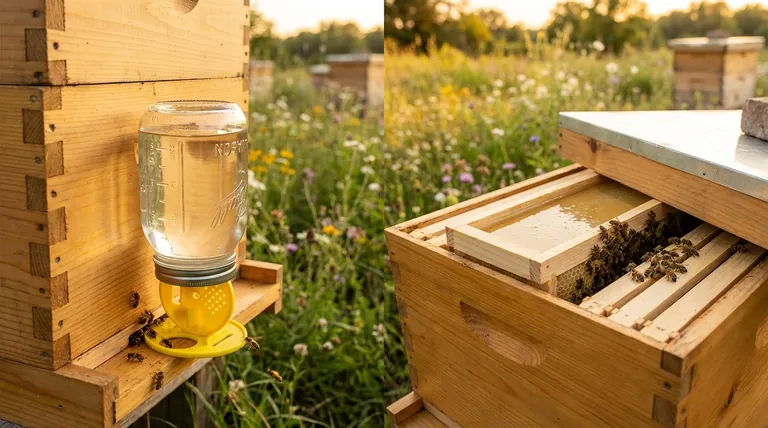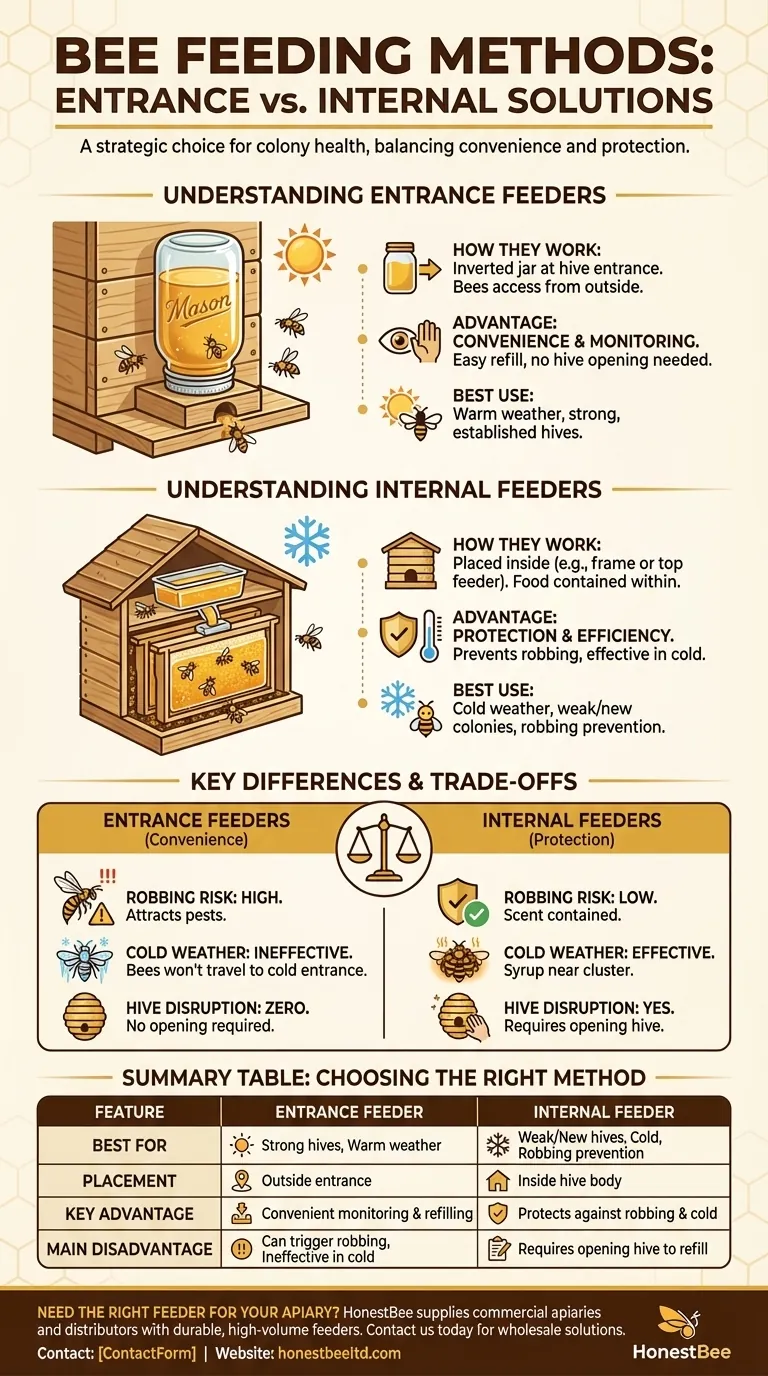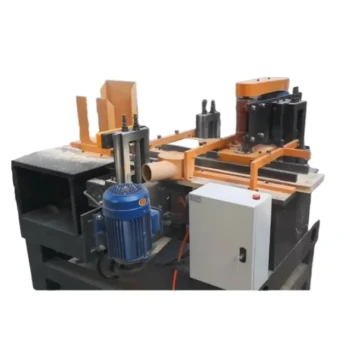In beekeeping, a feeding solution is administered using one of two primary methods: as an entrance feeder placed outside the hive or as an internal feeder placed within the hive itself. Each method serves a distinct purpose and is chosen based on the specific needs of the colony, the time of year, and the beekeeper's goals.
The choice between an entrance and an internal feeder is a strategic decision. Entrance feeders offer convenience, while internal feeders provide protection and are more effective in colder weather.

Understanding Entrance Feeders
An entrance feeder is any container of bee feed, typically sugar syrup, that is placed at the entrance of the beehive. This allows bees to access the food source from outside the main hive body.
How They Work
This method most commonly uses a device called a Boardman feeder. It consists of a small jar, usually a standard Mason jar, filled with syrup. The jar is inverted into a plastic or wooden base that slides into the hive entrance, allowing bees to access the syrup through small holes.
The Advantage: Convenience and Monitoring
The primary benefit of an entrance feeder is its simplicity. A beekeeper can see the syrup level at a glance and can refill the jar without opening the hive. This minimizes disruption to the colony.
When to Use Them
Entrance feeders are best used during warm weather with strong, established hives. The external placement makes them highly accessible, which is ideal when nectar flow is low but temperatures are mild.
Understanding Internal Feeders
Internal feeders are placed inside the hive, either on top of the brood frames or in place of one or more frames. This keeps the food source contained entirely within the hive's insulated environment.
How They Work
There are several types of internal feeders, including top feeders, which sit above the inner cover, and frame feeders, which are designed to fit inside the hive body like a standard frame. Bees access the syrup directly from within the hive.
The Advantage: Protection and Efficiency
The key benefit of an internal feeder is protection. By keeping the food inside, it significantly reduces the risk of robbing, where bees from other hives or wasps are attracted to the food source and attack the colony. It is also more efficient in cool or cold weather, as the bees do not have to break cluster or travel outside to feed.
Key Differences and Trade-offs
Choosing the correct feeder requires understanding the trade-offs between convenience and colony security.
Robbing and Pest Pressure
Entrance feeders act as a large, aromatic advertisement, which can easily trigger robbing behavior from nearby honeybee colonies and attract pests like wasps. Internal feeders keep the scent of the syrup contained, making them the superior choice for preventing robbing, especially for weaker or new colonies.
Weather and Temperature
An entrance feeder is ineffective in cold weather. Bees will often not break their cluster to travel to the cold entrance for food. An internal feeder keeps the syrup close to the bee cluster, allowing them to access it even in cooler temperatures.
Hive Disruption
Refilling an entrance feeder causes zero disruption to the colony. In contrast, refilling most internal feeders requires opening the hive, which can chill the brood and disturb the bees.
Making the Right Choice for Your Goal
Your decision should be based on a clear assessment of your colony's health and the current environmental conditions.
- If your primary focus is convenience for a strong hive in warm weather: An entrance feeder is an efficient and easy-to-manage option.
- If your primary focus is protecting a weak or new colony from robbing: An internal feeder is the only safe and responsible choice.
- If your primary focus is providing emergency food during cool or cold weather: An internal feeder ensures the bees can actually access the syrup they need to survive.
Ultimately, the best feeding method is the one that provides for your bees' needs while minimizing stress and risk to the colony.
Summary Table:
| Feature | Entrance Feeder | Internal Feeder |
|---|---|---|
| Best For | Strong hives, warm weather | Weak/new hives, cold weather, robbing prevention |
| Placement | Outside the hive entrance | Inside the hive body |
| Key Advantage | Convenient monitoring & refilling | Protects against robbing & cold |
| Main Disadvantage | Can trigger robbing, ineffective in cold | Requires opening hive to refill |
Need the Right Feeder for Your Apiary?
Choosing the correct feeding method is crucial for colony health and honey production. HONESTBEE supplies commercial apiaries and beekeeping equipment distributors with durable, high-volume feeders designed for operational efficiency.
We offer a full range of entrance and internal feeders to meet your specific needs, whether you're managing a few hives or a large-scale operation.
Contact HONESTBEE today to discuss wholesale pricing and find the perfect feeding solutions for your business.
Visual Guide

Related Products
- Beehive Entrance Discs Plastic Bee Entrance Disc for Bee Hives
- Mini Desktop Bee Hive Frame Forming Making Machine
- Frame Eyelets Assembly Machine Bee Frame Eyelets Fitting Machine Eyelets Machine
- Automatic Honey Filling and Filtering Machine for Beekeeping Bottle Filling
- Beekeeper Cowboy Hat and Veil for Beekeeping
People Also Ask
- What is the importance of understanding the function of each part of the beehive? Master Your Hive for a Thriving Colony
- What additional components and accessories are available for beehives? Essential Tools for Healthy, Productive Colonies
- Where is the hive entrance typically located? Optimize Your Hive's Health and Honey Production
- What type of bees are better adapted to certain climatic conditions? Match Bee Strategy to Your Climate for Success
- What equipment do you need to make honey? A Complete Guide to Starting Your Apiary



















